11/09/2020 | Maria Adelaide Marchesoni
Julius Baer art collection
More than 5,000 works of contemporary art by Swiss artists on display at the bank's offices
The Julius Baer art collection comprises more than 5,000 works of contemporary Swiss art in a wide range of media. It is exhibited in the bank's offices around the world. The beginning of the collection dates back to 1981 at the request of Hans J. Baer (1927-2011), and inspired by his belief that art in the workplace is an excellent starting point for conversation. Today, the artworks continue to engage and intrigue employees and visiting clients.
Cinzia Sanvido, member of the Art Commission that selects and decides on the acquisition of the works of art, explains how this process takes place and the characteristics of the collection.
How and when did the collection originate?
The family that founded the Institute had been collecting since the 1930s, and over time developed numerous contacts and friendly relations with artists living in Switzerland and with museum institutions, hence the interest in expanding the collection in the company. The JB-Art Collection was founded in 1981 by Hans J. Baer (1927-2011), a member of the founding family of the Institute.
For what reason?
The idea was, and still is, to buy and exhibit in the various locations of the Swiss Contemporary Art Group with the intention of supporting young Swiss artists or artists with a connection to Switzerland.
Why only Swiss artists or artists connected with Switzerland?
This is to underline our "Swissness", our roots.
Why is art important to JB and how do you see its role in the art scene?
It is important because it aims to support the Swiss art scene through acquisitions of works of art and to promote them through loans to museums and publications.
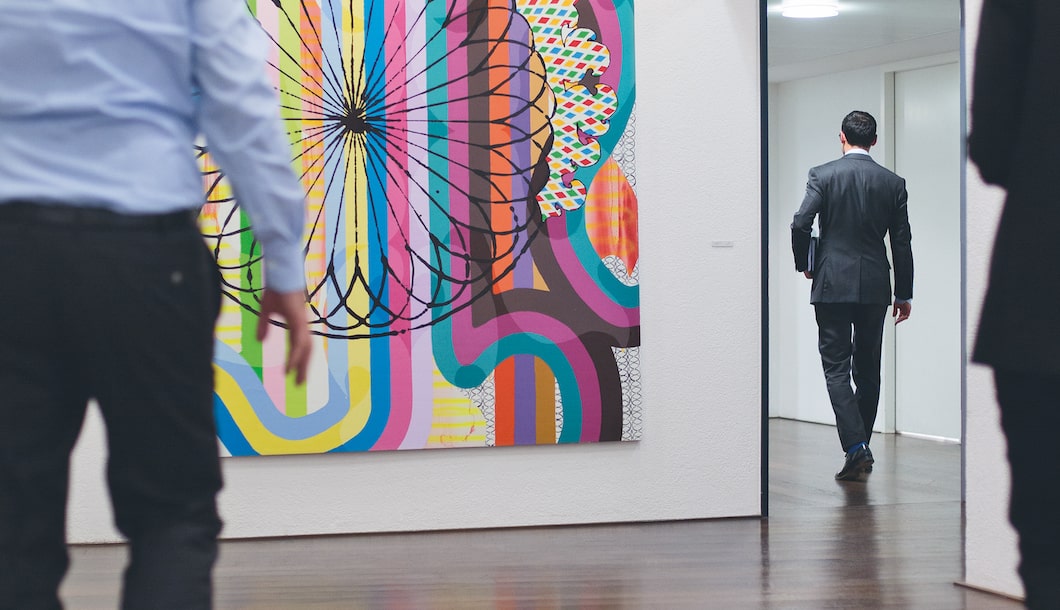
Christine Streuli (*1975), Feuerrad, 2006, lacquer on cotton, 240 x 190 cm (detail)
Are there emerging, mid-career or established artists?
At the time of our first acquisition of their work, the artists are often at the beginning of their careers, but at the same time they already show great potential. Then we follow them in their growth and try to acquire further works along the way. For older or established artists whose works are already in the collection, we occasionally make a strategic purchase to complete the group of works already present.
What are the most important works or artists in the collection?
Here are some artists: Pipilotti Rist, Roman Signer, Ugo Rondinone, Dieter Roth, John M. Armleder, Fischli & Weiss, Balthasar Burkhard, Christian Marclay, Markus Raetz.

Sylvie Fleury (*1961), Colorful 5 (Gold and Blue), 2018, acrylic on shaped canvas , 101.5 x 156.5 x 6.7 cm

Sylvie Fleury (*1961), Egoïste, 2000, white neon, 8.8 x 50.8 x 3.1 cm

Valentin Carron (*1977), Low low, Lorraine aimless, 2013, cast bronze, 21.9 x 36.8 x 5.1 cm
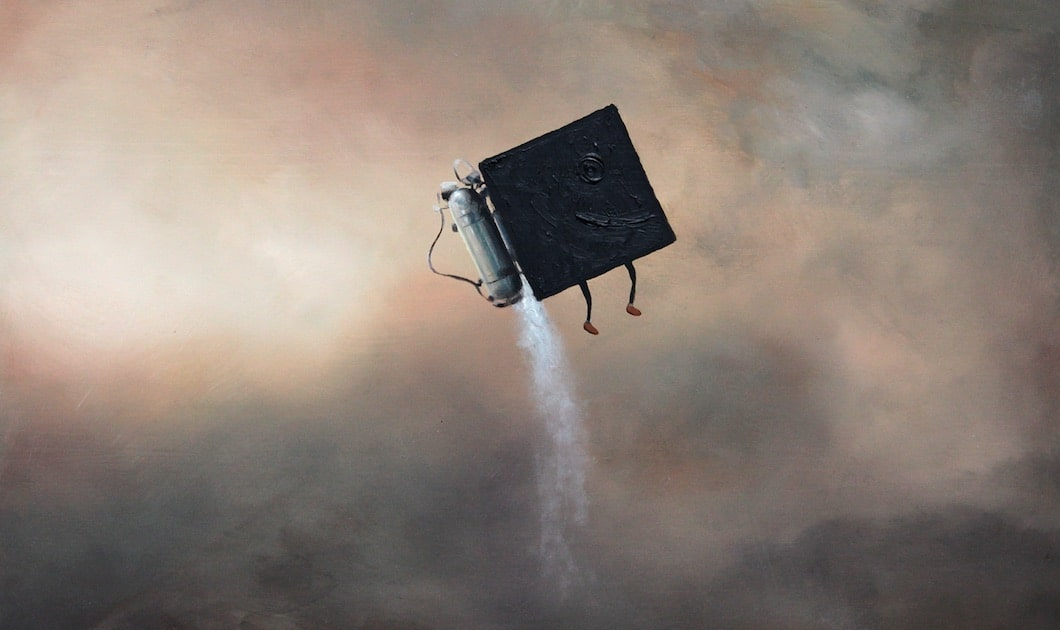
Francisco Sierra (*1977), Malewitschs Quadrat fliegt mit dem Jetpack davon, 2012, oil on wood, 28.5 x 35 cm

Vittorio Brodmann (*1987), Barking up a Tree, 2016, oil on fabric, double-sided, 208 x 142 cm
The first work to enter the collection?
Unfortunately we are not able to say because the database was organized years after the first acquisition. I can, however, mention the first photographs which first entered the collection: it is Stiller Nachmittag by Fischli / Weiss in 1985. This was followed by Beat Streuli in 1998. A decade later, the first video was acquired, a work by Pipilotti Rist.
And the most recent purchases?
Flesh and Wool by Valentin Carron. He is a mid-career artist from Valais, who reinterprets the familiar iconographic universe in a way that makes it seem ambivalent and alien.

Claudia Comte (*1983), Lapin africain 3, 2014, cedar wood, 33.5 x 20 x 9 cm
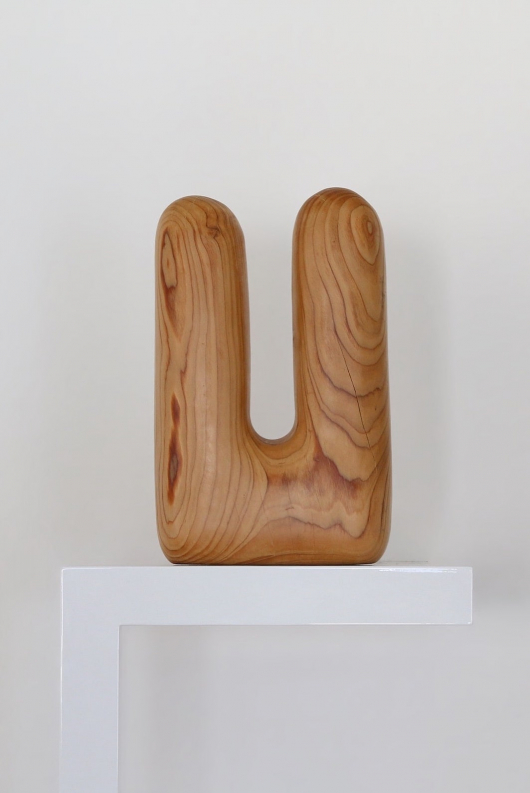
Shahryar Nashat (*1975), Not the Stuff of Stone, 2011, plaster, colour pigments and steel, 62 x 135 x 35 cm
What is the most prevalent media and the one which has recently entered the collection?
All the media are in the collection: paintings, watercolours, drawings, collages, sculptures, installations, videos, photography. The characteristic is that of spacing between the different techniques, so they are practically all present.

Taiyo Onorato & Nico Krebs (*1979/*1979), Building Berlin (Marzahn 1), 2009, silver gelatin print, 131.3 x 104.7 cm

Taiyo Onorato & Nico Krebs (*1979/*1979), video still from: Fire, 2014, 16 mm film transferred on sd dvd, 6'59''
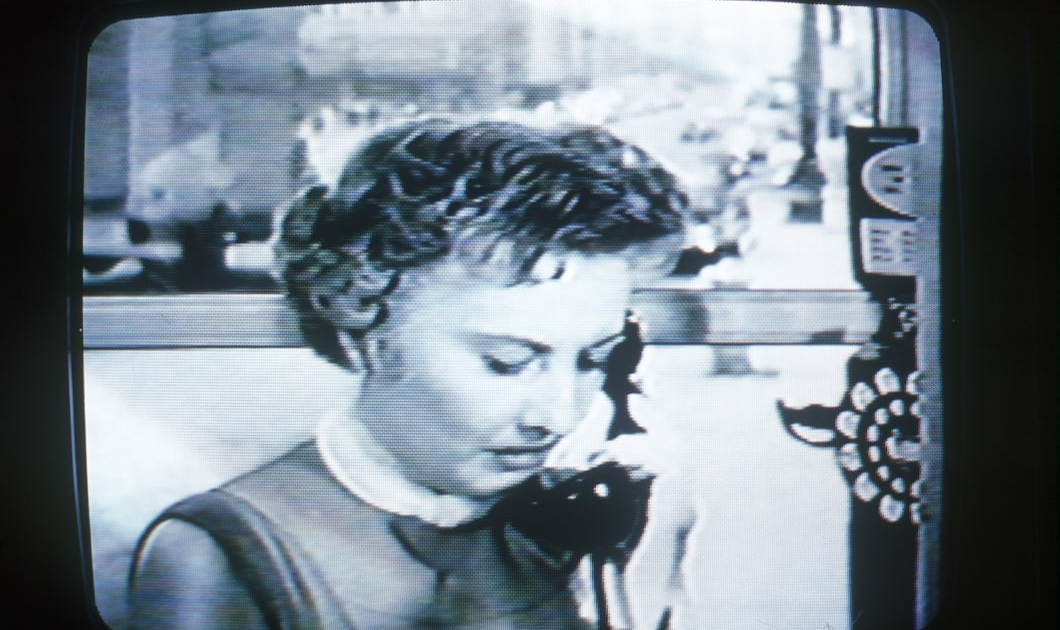
Christian Marclay (*1955), Telephones, 1995, single-channel video, colour and black-and-white, sound, 7' 35''

Beat Streuli (*1957), Sydney, Melbourne 97/98, 1997/1998, c-print on paper, 181 x 244 cm
Where do you buy: galleries, auctions, fairs?
We mainly deal with galleries, with whom we establish a good relationship with a mutual trust. Of course, we visit ArtBasel and ArtGenève every year and we also buy there, as well as at other fairs. We follow the auctions to keep us informed about the market trend of our artists.

Shahryar Nashat (*1975), Attend to the Wound, 2012, c-print and offset print on paper, 50 x 44 cm, 100 x 70 cm

Francisco Sierra (*1977), Ancestors, 2014, oil on canvas, 240 x 170 cm
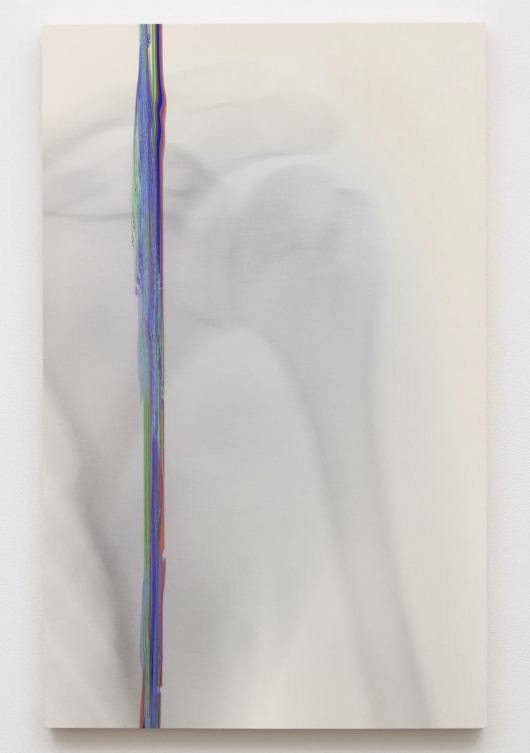
Shahryar Nashat (*1975), Ohne Titel, 2018, uv print on hydrocal, gesso, rubber and powder-coated steel, 108.3 x 87 x 4.4 cm
How is the selection of acquisitions carried out?
The selection is made through the Art Commission, which is also responsible for acquisitions. The Commission consists of the curator and a colleague who are exclusively responsible for the Collection, as well as four Group staff members who are located all over the country,and have a particular interest and sensitivity to contemporary art. Last but not least, there is an external consultant (currently Giovanni Carmine), who must be an expert in the field. I think this composition makes us very different from other commissions.
How did you become part of it?
It was almost by chance: during a visit made by the former curator to our offices in Lugano, I had the opportunity to discuss with him some of the works exhibited there. This discussion led to the proposal to join the Commission, and considering my passion for contemporary art I accepted with enthusiasm.

San Keller (*1971), Until the last dance, 2004, 55 contracts that have been signed since 2004 and all contracts that will be signed in future, 31 x 22.4 cm each
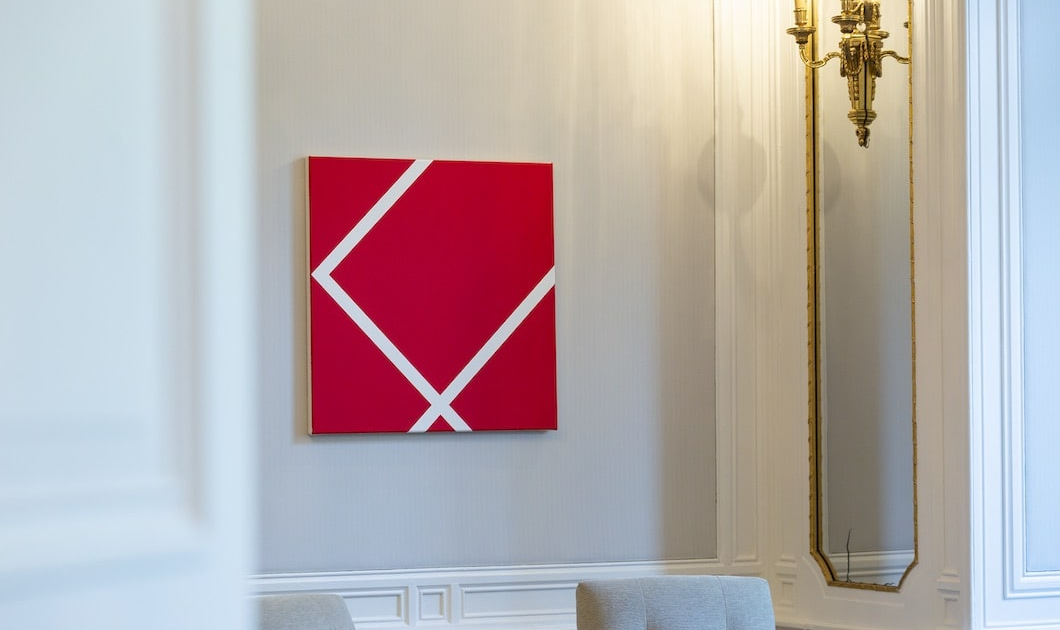
Francis Baudevin (*1964), Film 4, 2015, acrylic on canvas, 65 x 65 cm
Who is the present curator?
Barbara Staubli, art historian, has been in charge of the Collection since 2014. She has broad experience and is a member of the International Association of Curators.
Who appoints the curator?
It is a process that takes place within the Institute, however, the proposal comes from the Commission.
Is there a purchasing and sales policy?
Yes, it is well articulated, and has been revised recently to adapt to the evolution of the market, especially in terms of price ranges and who and how many members of the Commission should see the original work. Sales are not foreseen.
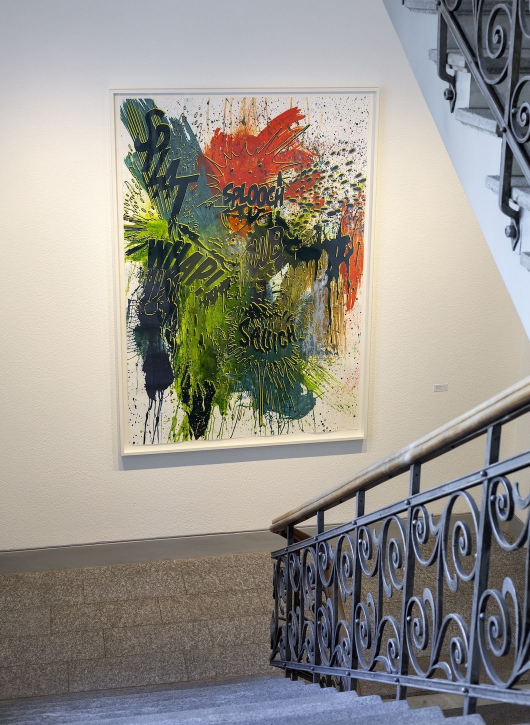
Christian Marclay (*1955), Actions: Splat Splooch Whap Blub Squich, 2014, screen-printing ink and hand-painted acrylic on paper, 213.5 x 148.2 cm

Jules Spinatsch (*1964), L'éclat c'est moi, 2013, inkjet print on paper, mounted on aluminium, 133 x 111 cm
Can you tell us more about the acquisition process?
Each member of the Commission is committed to proposing a potential acquisition and explaining the reasons for it. The proposals are then examined by the Committee (which meets 5-6 times a year) which proceeds to the final vote. It is a very interesting and enriching approach for everyone considering the different sensitivities and preferences. It is also an exercise in patience and democracy. I would like to stress that the proposed work should preferably be seen in original by each member of the Committee.
What are the considerations or acquisition strategies?
Particular attention is paid to the quality and innovation of the artist's work and how his or her artistic approach has developed.

Vittorio Brodmann (*1987), Little Sense of Urgency, 2019, acrylic and oil on canvas, 160 x 120 cm
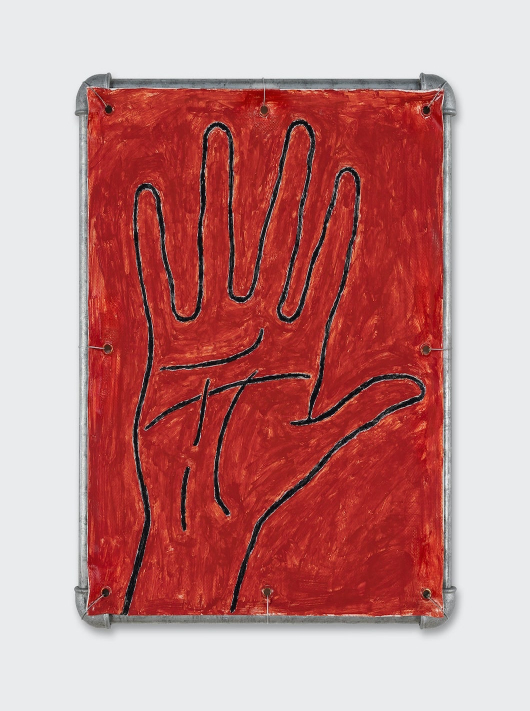
Valentin Carron (*1977), Des lignes des doigts, 2016, vinyl ink on pvc tarpaulin, galvanised steel tubing and metal wire, 50 x 40 cm
Who are the users of the collection?
Mostly the Group's clients and employees.
How does JB manage to involve the public?
The works are displayed in the areas where clients have access and in the waiting rooms, offices, staff restaurants, foyers and corridors of the Institute's various offices. For us, it is a question of stimulating discussions and comparisons between colleagues and visitors about the works on display in our buildings. We believe it is a source of inspiration and stimulation. We sometimes organise guided tours of our headquarters in Zurich for small groups.
In the past we have held a number of exhibitions in museums throughout Switzerland, and we also have a website (www.artcollection.juliusbaer.com/) where we organise virtual temporary exhibitions. Among other things, we participate in some exhibitions with a lounge where we invite visitors who are interested in contemporary art.
Do you make loans to public institutions?
Yes, this is also an activity that we are happy to carry out, always with a view to promoting art.